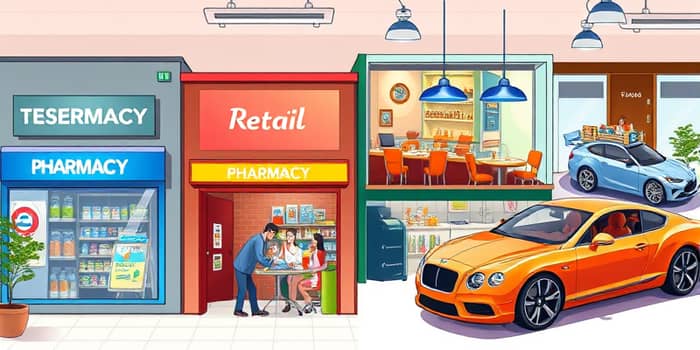
As Q2 2025 earnings reports pour in, leading retailers across various industries have delivered results that outshine Wall Street forecasts. From consumer electronics giants to specialty pharmacies and hybrid dining retailers, these companies are painting a picture of resilience, innovation, and strategic agility. Investors and analysts alike are taking note of how these businesses managed to exceed expectations and set new standards for performance in their respective segments.
Several marquee names reported results that underscore both operational excellence and consumer loyalty. Tech powerhouse Apple kicked off the quarter with a bang, reporting revenue of $95.4 billion, up 5% year-over-year, alongside an EPS of $1.65, an 8% increase that set a new March quarter record. Much of this success was driven by all-time high services revenue and a highly successful launch of the iPhone 16e, new Macs, and iPads. With $24 billion in operating cash flow and $29 billion returned to shareholders, Apple fortified its capital return program with a 4% dividend increase and a $100 billion buyback expansion, all fueled by a record-size active device base.
In healthcare retail, Walgreens Boots Alliance reported fiscal Q2 sales of $38.6 billion, a 4.1% increase (4.7% on a constant currency basis). This performance highlights the defensive characteristics for health-centric retailers, as demand for pharmacy services and wellness products remains steady amid economic shifts.
Casual dining and retail hybrid operator Cracker Barrel delivered $949.4 million in Q2 revenue, up 1.5% year-over-year, driven by a 4.7% rise in comparable restaurant sales. While its in-store retail sales saw a modest 0.2% gain, the company reported adjusted EBITDA of $74.6 million (up 19.6%) and adjusted EPS of $1.38. The strength in dining translated into traffic-driven gains on the restaurant side, prompting management to raise full-year adjusted EBITDA guidance to $210–$220 million.
Over in automotive retail, BMW Group maintained its position as the global premium segment leader, delivering 210,385 vehicles worldwide. With an EBIT margin of 8.1% and a 17.9% return on equity in its financial services segment, BMW exemplified strong performance in high-end car retailing that resonates with affluent buyers seeking both innovation and brand prestige.
Global coffee chain Starbucks presented a more nuanced picture: international net revenues grew 6% to $1.9 billion, while North America segment sales nudged up 1% to $6.5 billion. Comparable store transactions fell 4%, but a 3% rise in ticket size resulted in a net 1% decline in comps. With a 5% net new store growth, Starbucks managed to mitigate margin compression (operating margin fell from 18.0% to 11.6%) through strategic expansion and menu enhancements that delivered increased ticket size offset flat transactions.
Across these diverse success stories, several common themes emerge. Retailers that blend physical presence with digital engagement, offer essential products or premium experiences, and diversify revenue streams through services are more likely to exceed expectations.
For a concise view of how these leaders stack up, the table below summarizes key performance indicators.
*GAAP net income down; adjusted metrics improved.
Industry analysts note that Q2 earnings surprises often serve as catalysts for broader market movements. According to academic research and data aggregators like Nasdaq and Wall Street Horizon, these select segments benefited from robust consumer demand in resilient categories and strong brand ecosystems. Investors are closely monitoring how these trends evolve, especially as inflationary pressures and economic uncertainties persist.
Looking ahead, retailers that invest in omnichannel capabilities, refine loyalty programs, and optimize cost structures will be best positioned to navigate market fluctuations. Store footprint expansion, digital integration, and agile supply chains are becoming table stakes in sectors ranging from pharmacy to premium automobiles.
Notably, Cracker Barrel’s upward revision of EBITDA guidance underscores its management’s optimism and operational discipline. Apple’s continued capital returns, including a 4% dividend hike and a $100 billion buyback, signal confidence in cash flow generation and shareholder value creation.
Ultimately, the success stories of Q2 2025 demonstrate that a clear focus on customer experience, diversified revenue streams, and strategic agility can enable retailers to not only meet but exceed market expectations. As these companies refine their playbooks, they offer valuable lessons for peers and investors aiming to thrive in a dynamic retail landscape.
This quarter’s retail earnings highlight the enduring power of innovation, brand strength, and strategic evolution. By focusing on essential services, premium experiences, and hybrid business models, leading retailers have showcased their ability to outperform in challenging environments. As we look forward to the next reporting season, the lessons learned from Apple, Walgreens, Cracker Barrel, BMW, and Starbucks will shape best practices across the industry.
References













